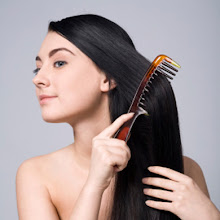What to Grow in Your Intensive Garden After the Frost-Free Date
Plants that are spaced 6" or less apart and will be planted after the frost-free date: onion sets, garlic, peas, radishes, green onions, spinach, lettuce, Swiss chard, turnips, parsnips, beets, carrots, etc., planted in succession. Unless you have a long season green onions shouldn't be planted later than two weeks past the frost-free date or they will not get big enough to use.
Onion and garlic sets are planted to grow bulbs. They will need to be planted in the outside rows of the beds. Onions will store well and are a main ingredient in salsa, tomato sauce, catsup etc. I always devote an entire bed to onion sets and plant eight rows in the same bed. When the tops die down I can turn off the water to that bed and cure the bulbs without affecting plants that are still growing.
Other crops that are spaced further apart are usually transplanted. Brussel sprouts, celery, broccoli, cauliflower, cabbage, etc. Brussel sprouts, celery and broccoli are long-season crops; they grow tall, and should be planted in the centers of the beds. Cauliflower and cabbage harvest earlier, are shorter, and can be planted in the same bed, one row on each side of the beds center row.
Cauliflower and broccoli are both sensitive to heat much like lettuce and spinach. If the summer heat comes to fast the heads will be small. The broccoli will continue to produce all season but the buds will continue to get smaller. When it cools down in the fall the broccoli buds will increase in size again.
Here in Utah planting cauliflower in the spring is a gamble. In some years if it stays cool in the spring they will form good heads. In other years they form a 3" head and bolt to seed. However in the years that the cauliflowers do well, the tomatoes and peppers do not. I always plant a variety of different crops every year for that reason.
Warm-season crops that are spaced further apart and are usually transplanted are tomatoes, eggplants, peppers etc. You can transplant them in your beds among the early crops after the frost free-date.
Always use tomatoes as a center row crop. Besides growing tall they spread out and end up taking up the whole bed by the end of the season. Keep in mind that one single cherry tomato plant will produce a lot and unless you can use a lot of cherry tomatoes only grow one plant. I usually plant one bed with roma tomatoes, and one bed with a variety of early, mid-season and larger varieties combined. The romas have fewer seeds and work out well for making salsa and sauces.
Eggplants and peppers can be planted three rows per bed. You can put a row of eggplant in the center and rows of peppers on each side. I usually plant full beds of peppers and mix the varieties. I plant one row of chilies, one jalapeno plant, and the rest assorted bell and banana types. This will provide enough for fresh use and salsa.
Other long-season crops that are best planted from seed including melons, squash, pumpkin, cucumber etc. will have their growth stunted when planted in pots. They can't be transplanted until after the frost-free date and I have found that when the seeds are planted direct they will outgrow the transplants.
Squash has two categories summer squash that grows short and bushy and winter squash that will grow as a vine. Summer squash like zucchini, crook neck, straight neck, and scallops grow well in the bed center. They grow fast so I plant the seeds in a bed that was planted with an early crop of spinach or turnips that can be harvested from that bed before the squash grows too large.
Keep in mind that one summer squash plant will produce a lot. If you have too many plants plan on giving some away. Cucumbers can be planted in the same row, then you can have one or two summer squash plants, and the rest of the row will be cucumbers.
The cucumbers can be trained up a tomato cage to contain them in the bed. I choose a bush variety to plant in the beds so they will not need a trellis. If you like to make pickles 2' beds along a fence work well. In a year that tall peas are planted along the fence, plant pickles or regular cucumbers in front of the pea plants, after the peas die, the cucumbers will take over the space.
Pumpkins, winter squash and melons take up a lot of space and unless you have a large garden they may not be practical to grow. They can be planted in the beds the same way as the cucumbers and trained on a trellis. I plant them in the fence beds similar to the pickle example.
Fence beds are useful for food storage combinations. Try to arrange your plot to make use of fence lines in your garden plan. If I have missed some of your favorite plants you should be able to add them to one of the above categories.

0 comments:
Post a Comment